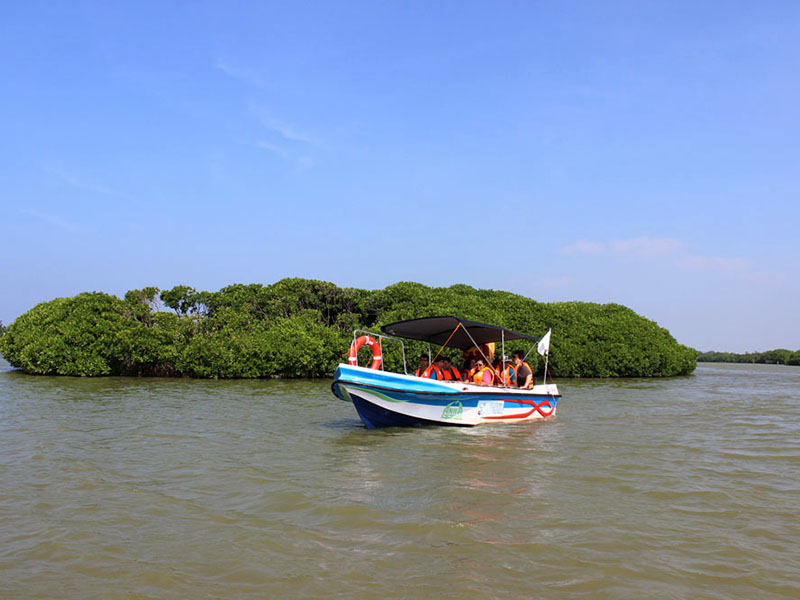DUTCH CANAL & LAGOON TOUR
The Dutch Canal in Sri Lanka, spanning 14.5 kilometers from Puttalam to Colombo, holds a significant place in the island's colonial history and transportation network. Constructed during the early 19th century by the British, this canal served as a crucial link in the supply chain for the Dutch colonial administration, connecting key regions like Puttalam, Negombo, and Colombo.
Dating back to the 8th century, references to Sri Lanka's western seaboard canals highlight their vital role in facilitating trade and transportation. Over time, rulers recognized their strategic importance, with King Veera Parakramabahu VIII of Kotte establishing a network of canals to transport commodities such as spices and produce to main seaports like Negombo and Colombo.
During the Portuguese and Dutch colonial eras, efforts to utilize coastal marshlands for agriculture were hindered by saltwater intrusion. Consequently, ambitious projects were initiated to reclaim land and manage water resources, including the construction of dams, structures, and canals. These initiatives aimed to drain saltwater from rice fields and ease transportation of valuable goods like cinnamon to Negombo's seaport.
A notable project was the Dutch Canal, connecting ports and remote Dutch-controlled territories. This canal system was pivotal in colonial infrastructure, facilitating the movement of goods and people across the region. Challenges persisted, however, with coastal tides and salinity requiring ongoing water management innovations.
Under British rule in the early 19th century, the construction of the Hamilton Canal marked a significant development. Conceived to improve drainage in the Muthurajawela wetlands and enhance transportation between Colombo and Negombo, this project aimed to address environmental and logistical challenges.
Despite its noble intentions, the Hamilton Canal inadvertently exacerbated salinity intrusion issues, highlighting the complex relationship between human intervention and environmental impact. Today, the Dutch Canal serves as a reminder of Sri Lanka's colonial legacy and the importance of its waterways.
Preserving these ecosystems is crucial, necessitating ongoing conservation efforts amidst modernization. As Sri Lanka balances development with environmental concerns, lessons from the Dutch Canal's history inform sustainable practices for the future.
Day Tours
See more
See less
Round Tours
See more
See less
Things To Do
See more
See less

